Exploring The Midnight Library: Insights into Choices
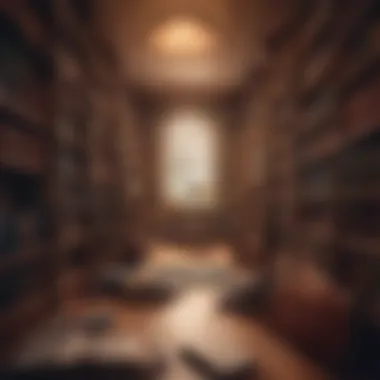
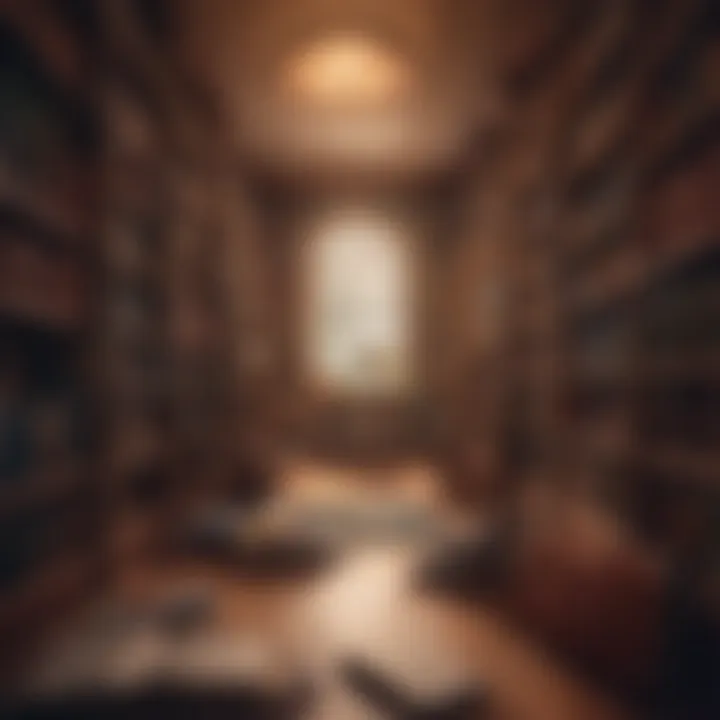
Intro
Matt Haig's The Midnight Library invites readers into a realm where choices echo through infinite possibilities. This captivating narrative revolves around Nora Seed, a young woman disheartened by her own life decisions, finding herself seemingly stuck in the monotony of existence. As she teeters on the brink of despair, she discovers a library that offers a unique chance to explore the paths her life could have taken had she made different choices. This profound overlay of fiction and philosophy weaves a tale rich with the exploration of regret, hope, and self-discovery.
In this deep dive, we unpack the layers that make The Midnight Library resonate. The text provides not just a narrative, but a mirror reflecting the choices we all ponder. Haig masterfully melds storytelling with insightful themes, allowing readers to ponder their own regrets and aspirations. Each book in Nora's library presents an alternate version of her life, a reminder of how every decision can lead us down an unexpected path.
Through this article, we aim to explore the central themes, character dynamics, and philosophical underpinnings that contribute to Haig's ability to engage readers in a meaningful dialogue about the human experience. From examining the critical genre placements of the book to offering a summary filled with key insights, this analysis encourages personal growth and self-reflection, thereby aligning with the mission of the Flibos portal in fostering access to transformative literature.
Book Categories
Fiction and Literature
The Midnight Library fits snugly into the fiction and literature realm, where it thrives on narrative depth and emotional complexity. This genre allows for the exploration of human experiences, rich characterization, and philosophical undertones. Through Nora's journey, readers grapple with the weight of choice and consequence, pushing them to reflect on their own lives. The narrative is woven with emotional threads, exploring universal themes that resonate across different cultures and circumstances.
Self-Help and Personal Development
On a different note, Haig’s narrative transcends traditional storytelling to occupy a space within self-help and personal development. This unique blend offers readers tools for introspection and growth. The book serves as an invitation to evaluate their own choices and the feelings of regret that often accompany them. The metaphor of the library filled with possibilities speaks volumes about the choices available to every individual, encouraging a mindset orientated towards self-betterment. While fiction at its heart, the underlying message acts as a guide for those seeking clarity in turbulent times.
Book Summaries
Key Insights and Takeaways
- The Importance of Choices: Each of Nora’s alternatives illustrates how seemingly inconsequential decisions can shape one's life trajectory.
- Regret as a Teacher: The narrative embodies the idea that regret can often be a powerful catalyst for change, guiding individuals towards self-improvement.
- Possibilities Are Infinite: The library's infinite shelves serve as a metaphor for the multitude of paths available to everyone, reinforcing the notion that life is not solely dictated by past mistakes.
- Self-Discovery: The exploration of different lives not only showcases various outcomes but also highlights the journey towards self-acceptance.
How to Apply the Lessons
- Engage in Reflection: Regularly take moments to introspect on your choices and the emotions they elicit.
- Shift Perspectives: When feeling lost, consider how different decisions might lead you to new opportunities.
- Embrace Regret: Acknowledge past decisions as lessons to foster personal growth rather than sources of guilt.
- Cultivate Possibility Thinking: Challenge yourself to envision multiple outcomes for every important decision, embracing the infinite nature of choice.
The Midnight Library serves not just as a story but as a reservoir of insights eager to be explored. As readers step into Nora’s shoes, they inevitably join her on the quest for meaning, growth, and an understanding of the beautiful chaos that is life.
Intro to The Midnight Library
The significance of exploring The Midnight Library by Matt Haig cannot be overstated, especially in a literary landscape laden with themes of existential dread and introspection. This novel has transcended the boundaries of typical storytelling, engaging readers by intertwining metaphysical concepts with human experiences. It effectively serves as a mirror, reflecting our own uncertainties surrounding choices and the often tumultuous journey of life. Through the lens of this narrative, Haig opens the floor to profound discussions on regret, possibility, and self-discovery.
The importance of this exploration lies in its ability to resonate deeply with individuals from all walks of life. Readers searching for meaning in times of uncertainty find solace in Haig's words. As they navigate Nora Seed’s journey through various alternate lives, they find an exploration of not just her regrets but potentially, their own. This discourse is critical in understanding the fabric of the human experience, as it forces us to confront uncomfortable truths about ourselves.
Moreover, understanding how the novel is structured enriches the reading experience. It provides insight into how various choices made in life can ripple through time and impact our existence, showcasing that each decision—big or small—holds significance. This allows the audience to appreciate the nuances of narrative intricacies that give The Midnight Library its captivating charm. Thus, diving into this narrative is not merely an investigation of a single book; it’s an exploration of the fundamentals of life itself.
Author Background
Matt Haig has carved a unique space in contemporary literature, often intertwining personal experiences with universal themes. He was born in Sheffield, England, and has faced his own struggles with mental health, which profoundly shapes his work. This personal lens gives The Midnight Library an authenticity that many readers find relatable.
Having authored various titles ranging from fiction to non-fiction, Haig's writing is underscored by a relatable yet profound examination of human frailty. His work encourages readers to confront their fears and uncertainties without flinching. This element of vulnerability stands as a cornerstone of his narrative style, making him a significant voice in modern literature.
Overview of the Novel
The Midnight Library introduces readers to Nora Seed, a woman teetering on the edge of despair. The narrative unfolds in a library that exists between life and death, providing Nora with an opportunity to explore countless versions of her existence based on the choices she did or did not make. Here, each book serves as a portal to an alternate reality, showcasing what her life could have been if she had taken a different path.
This setup allows Haig to weave in philosophical themes practically and engagingly. Readers are compelled to ponder decisions in their own lives while exploring Nora's myriad existences. The library becomes a tool—not just for escapism but for self-reflection. It prompts critical questions about what happiness truly means and whether it is something we can craft for ourselves or if it's something that happens by chance.
Navigating through the novel, one feels an undercurrent of hope amid its heavy themes. The stark beauty of Haig's prose serves as a catalyst for introspection, challenging readers to evaluate their definitions of success, joy, and fulfillment. Thus, the journey through The Midnight Library becomes an essential exploration not only of Nora’s life but also of our own.
The Structure of The Midnight Library
Understanding the structure of The Midnight Library is akin to examining the bones of a finely crafted piece of art. The interplay between its narrative style and chapter delineations serves as the foundation for the deeper themes that unfold, shaping not only the reader’s journey but also their understanding of the core messages embedded in Haig’s writing. This structure is vital because it mirrors the protagonist's exploration of choices, emphasizing how each decision forms a part of the tapestry of her life. The specific elements of the structure— from the narrative progression to the chapter arrangement — create a blueprint that enhances the reading experience and underscores the philosophical inquiries the novel presents.
Narrative Style
The Midnight Library employs a unique narrative style that draws readers in immediately. Matt Haig uses a third-person limited perspective, which allows for an intimate glimpse into Nora Seed's thoughts and emotions without overshadowing the narrative with an overtly subjective lens. This choice of narrator facilitates a more universal exploration of themes like choice and regret, permitting readers to empathize deeply with Nora's struggles.
Haig’s prose is lucid and accessible, yet it drips with philosophical musing. He marries simplicity with poignancy, creating sentences that stick with you, like a bittersweet melody. For instance, Nora's various experiences in the library are described with vivid descriptions that spark the imagination. Readers feel both the weight of her regrets and the lightness of her rediscovered possibilities, making it easier to analyze their own lives. The use of short, impactful sentences interspersed with more elaborate ones crafts a rhythm that mirrors the highs and lows of Nora's emotional journey.
Additionally, the dialogue is engaging and reflections are often pithy, adding another layer of depth. This narrative approach is not merely a stylistic choice; it plays a crucial role in reflecting the existential queries posed by the story. Haig's ability to weave these intricate threads together captures the complexity of life and decision-making, reflecting how the choices we make resonate through both personal and societal lenses.
Chapter Analysis
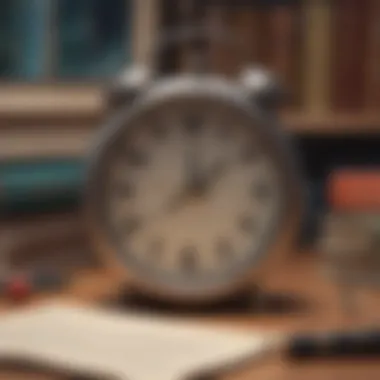

Examining the chapters of The Midnight Library reveals an intricate design that mirrors the labyrinth of life choices. Each chapter serves not only as a separate entity but also as a continuation of Nora's exploration of alternate lives and regrets. The organization invites readers to contemplate the concept of parallel existences, which Haig fleshes out effectively through the progression of the narrative.
The chapters typically shift between different ‘lives’ that Nora might have chosen, each leading to varying outcomes—some uplifting, some deeply painful. For instance, one chapter might detail Nora's life as a successful musician while another depicts her as a thriving mother. This structural choice emphasizes the theme of choices and consequences, making the reader consider how each fork in the road shapes an identity.
Moreover, Haig creates a cyclical structure that reflects not just Nora’s journey but also the universal human experience. The back-and-forth movement between her past decisions and potential futures evokes the feeling of déjà vu; it’s a reminder that many of us live in cycles of regret and hope.
"We are all living in a state of becoming. Every choice pushes us to a new reality, and yet, the question remains: what if we had chosen differently?"
Through carefully delineated chapters, the novel maintains a conversational flow, keeping readers deeply engaged while facilitating introspection. It operates on a logical progression that avoids convoluted exposition, enabling readers not only to follow Nora's journey but also to reflect on their own lives and decisions.
In sum, the structural components of The Midnight Library weave together a narrative that is both poignant and thought-provoking. The narrative style and chapter analysis serve as essential vehicles for the exploration of existential themes that resonate deeply with readers, calling them to consider the paths they choose and the lives they could lead.
Central Themes in The Midnight Library
The exploration of central themes in The Midnight Library serves as a linchpin, illuminating the novel’s complex narrative and its compelling messages regarding human experience. This theme not only pulls readers into Nora Seed's multifaceted life through the prism of choice but also invites reflection on deeper existential musings. Understanding these themes enhances the overall engagement with the text, revealing how Haig weaves profound philosophical questions into a narrative that is relatable and unique.
Choices and Consequences
At the heart of The Midnight Library lies the theme of choices and consequences, punctuating the reality that every decision carries weight. Nora Seed’s journey through multiple lives showcases what could have been, heightening the sense that our choices, big or small, shape the trajectory of our lives. Readers are invited to ponder how every choice may lead to a different version of oneself, encapsulating the age-old adage, "What if?"
- For instance, when Nora opts to pursue a musical career over her scientific studies, the ripple effects are enormous. Each alternate reality reveals possibilities not just for success, but also for failure and heartache. It illustrates the labyrinth of potential life paths weighted with the question of what truly defines us.
In many ways, this theme reinforces a universal truth: the power of decision-making is integral to personal agency. Choices can open doors or shut them, and The Midnight Library navigates this complex reality with grace, leaving readers to ponder their own life choices in a more introspective light.
Regret and Redemption
Regret weaves through the fabric of Nora’s journey, acting as both a motivator and a mentor. Each alternate life she experiences is steeped in her regrets, forcing her to confront not only her past failings but also her aspirations. This aspect of the narrative delves into the poignant human emotions that often accompany life decisions.
- The experience of regret, especially regarding relationships, echoes loudly for many. Nora's varying paths illustrate how her choices cloud her contentment, and ultimately, how she must find redemption through acceptance of her flaws and missteps.
Regret is also juxtaposed with the idea of redemption, creating a powerful dialogue between despair and hope. It’s an essential reminder that while past mistakes may linger, they don’t have to dictate future happiness. This theme reinforces the belief that growth is possible through reflection, allowing readers to see not just Nora's journey but their own paths toward forgiveness and healing.
The Nature of Happiness
The exploration of happiness within The Midnight Library is perhaps the most intricate thread woven throughout the narrative. As Nora traverses different lives, readers witness varying definitions of fulfillment. What does it mean to be happy, and can it truly exist without the ups and downs of life?
- Haig presents happiness not as a constant state but as a fleeting combination of experiences. From the exhilarating highs of achievement to the introspective moments of solitude, the portrayal challenges societal norms that equate happiness with success.
Through her many lives, Nora learns that real joy often stems from simple connections rather than grand accolades. The emphasis on relationships, introspection, and acceptance resonates deeply with anybody who's ever pondered the essence of true happiness. It provokes a reconsideration of values, prompting an analysis of what genuinely brings joy.
"Happiness is often found in the smallest of moments; it is in the quiet spaces, not just the loud victories."
By diving deep into these central themes, The Midnight Library transcends a mere narrative, becoming a profound exploration of the human experience—a mirror reflecting our own societal challenges, our inner struggles, and ultimately, the vital conversations we must have with ourselves regarding choice, consequence, and the pursuit of happiness.
Character Development in The Midnight Library
Character development serves as the backbone of any compelling narrative, and Matt Haig’s The Midnight Library is no exception. This novel meticulously details the evolution of its characters, especially the protagonist, Nora Seed. By focusing on the changes, struggles, and growth of its characters, the book effectively engages readers while thoughtfully exploring themes of regret, choice, and self-acceptance. Through this exploration, Haig underscores the profound impact of interpersonal relationships and personal decisions in shaping life’s journey.
Nora Seed: A Central Figure
Nora Seed is not just a character; she is a representation of myriad paths one can take in life, embodying the eternal struggle between despair and hope. At the novel's opening, she is steeped in a profound sense of failure, grappling with feelings of inadequacy that stem from her unfulfilled dreams—be it her aspirations of becoming a glaciologist or her penchant for music. These elements create a multi-dimensional character who resonates with many readers facing similar dilemmas.
As the story unfolds in the auxiliary universe of the Midnight Library, we witness her choices as they branch out into various lives, where each decision unlocks a different possibility. What’s unique about Nora is that she doesn’t merely flit from one existence to the next without contemplation; each life she experiences forces her to confront the repercussions of her choices, challenging her beliefs about happiness and fulfillment. It’s a complex portrait of a woman searching for meaning amidst chaos, making her journey relatable and touching.
The sheer depth of Nora's character is further amplified by her moments of reflectiveness and vulnerability. Each iteration of her life reveals hidden aspects of her personality, showcasing her resilience and, at times, despair. For example, in one life where she is a rock star, the glittering facade hides a profound loneliness. These contrasting experiences provide readers with a holistic view of Nora, allowing them to empathize with her struggles and triumphs. Ultimately, her transformative journey leads her to a deeper understanding of herself, which echoes Haig’s underlying message: sometimes, the journey is more enlightening than the destination.
Supporting Characters
While Nora's journey is central, the supporting characters in The Midnight Library play an equally significant role in enriching the narrative. Characters such as Mrs. Elm, the librarian, serve as a catalyst for Nora's self-discovery. They represent different perspectives on life and serve as mirrors reflecting her fears and hopes. Through her conversations with Mrs. Elm, Nora begins to unravel her understanding of regret and happiness, offering poignant insights into her psyche.
Moreover, recurring figures, like her brother Joe, further illuminate Nora's backstory. The tensions and unresolved issues in their relationship provide a canvas for exploring themes of forgiveness and familial bonds. The character of Joe embodies the notion that our relationships have a lasting impact on our choices.
There’s also a mosaic of other characters encountered by Nora during her explorations that add depth to her journey. Each one carries their own burdens and aspirations; their lives intertwine with Nora’s, showcasing the interconnected nature of existence. For instance, when she meets a version of herself with children, it highlights the contrast between personal choices and societal expectations, asking readers to reflect on what truly brings fulfillment.
Philosophical Underpinnings of the Novel
The exploration of the philosophical underpinnings in Matt Haig's The Midnight Library is crucial for understanding not just the narrative but also the nuanced ideas that underpin the choices made by characters and how they reflect on our own lives. At the heart of the novel lies the interrogation of the human condition—our struggles, desires, and, ultimately, our choices. The intricacies of existentialism and the multiverse theory serve as a lens through which readers can examine their own lives.
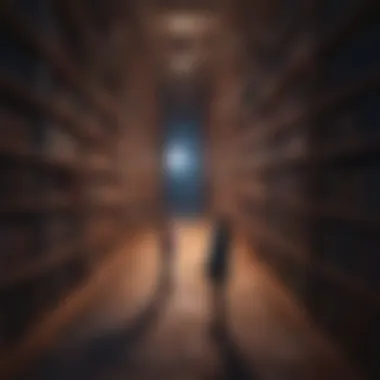
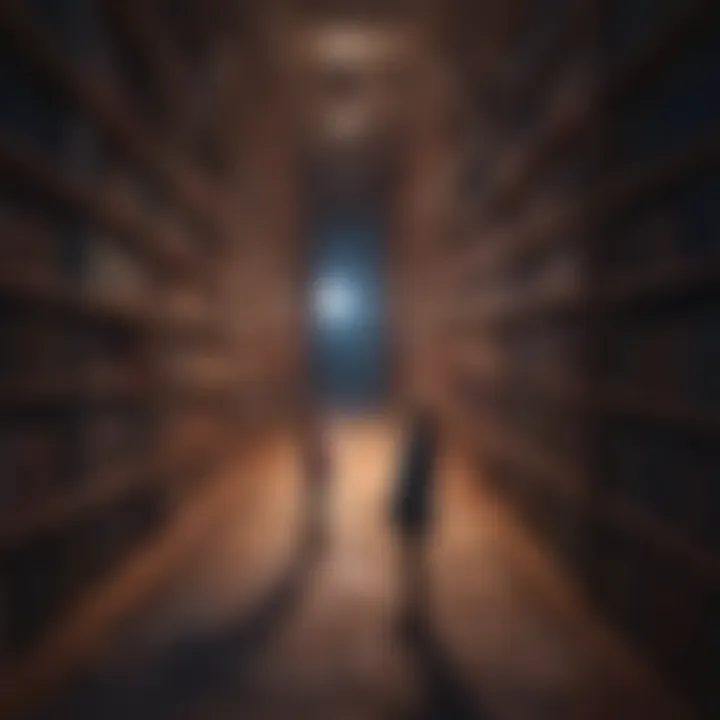
In Haig’s narrative, the midnight library itself symbolizes myriad lives, each representing different choices that can be made. This reflects an innate human curiosity about what could have been, if only circumstances had shifted slightly. This theme resonates particularly with students and educators, as it provokes deep reflection on the implications of choice and chance in shaping our existence.
Existentialism and Choice
Existentialism is a philosophical exploration of individual existence and autonomy, asserting that personal decisions fundamentally define meaning in life. In Haig's work, Nora Seed’s journey through the library serves as a vivid portrayal of the existential dilemmas we face. Each book she opens represents a life she could have lived, confronting the heavy thought that every choice not taken shapes a part of one's identity.
Nora's struggle deals with the weight of despair and the feeling of disillusionment, common threads in existential thought. The narrative doesn't shy away from the reality that many individuals grapple with the question of whether their choices actually matter. Here’s where the profound philosophy of the novel meets the everyday experience of readers.
"The only way to find the best version of yourself is to embrace the lessons learned from your past, not to avoid them."
Particularly resonant is the moment when Nora learns that not all choices lead to happiness. This challenges the traditional view of choice as a straightforward path to fulfillment. Instead, Haig illustrates that regret can coexist with acceptance and growth.
The Multiverse Theory
The multiverse theory posits the existence of multiple, perhaps infinite, realities where every possible outcome of a decision unfolds. This concept is woven into the fabric of The Midnight Library, inviting readers to contemplate the enormity of their choices. As Nora flits between the alternate lives she could have led, the narrative nudges us towards a fundamental truth: that life is inherently unpredictable.
In this context, the library represents more than just a storehouse of options; it becomes a metaphor for potentiality. Each volume symbolizes a different direction her life could take, reflecting a divergent path stemming from her decisions. This visualization of choices opens up interesting discussions about fate, randomness, and agency—topics relevant in both philosophical and educational contexts.
In understanding this framework, readers may find themselves considering their own paths—asking questions about their decisions and exploring how alternate scenarios may have shaped their current selves.
To synthesize, Haig’s integration of existentialism and the multiverse idea provides a robust intellectual backdrop to the emotional journey of the characters. This duality—balancing the tension between choice and consequence—resonates deeply, fostering a connection with readers who are actively navigating their own lives.
Cultural Impact of The Midnight Library
The cultural resonance of The Midnight Library serves as a fascinating lens through which we can understand contemporary literary trends and the way books influence our collective psyche. Matt Haig's novel has not merely been a commercial success but has also stirred conversations around mental health, choice, and the intricate web of regret and fulfillment. It’s a noteworthy addition to the publishd landscape, providing more than just an engaging read, but a medium for self-reflection and personal growth.
Reception and Reviews
The reception of The Midnight Library has been overwhelmingly positive, resonating with a wide range of readers from different backgrounds. Critics have hailed it as a poignant exploration of life’s choices and the overarching theme of possibilities. Reviews often highlight how Haig’s narrative approach combines thought-provoking questions with accessible prose that appeals to a broad audience.
- Critics’ Consensus: Many literary critics have appreciated Haig’s blend of philosophical depth with relatable characters. The novel has been likened to Alice in Wonderland for its imaginative premise, while also incorporating existential themes reminiscent of Albert Camus.
- Reader Feedback: Book clubs and forums, such as those on Reddit, have seen discussions flood with personal anecdotes related to the book’s themes. People share how the dark moments of the protagonist, Nora Seed, echo their own life struggles, creating a bridge between fiction and real-life experience.
"Haig's narrative doesn’t just tell a story; it hands over a mirror reflecting the choices we all ponder at some point in our lives." - Literature Today
This mirror-like quality has led to increased sales and a persistent presence on multiple bestseller lists. Moreover, the novel's ability to spark discussions on social media platforms points to its cultural relevance, emphasizing how literature can traverse personal boundaries and connect individuals on shared journeys of introspection.
Adaptation to Other Media
The wave of interest generated by The Midnight Library hasn’t been confined to the pages of the book alone. As its popularity soared, various avenues for adaptation were explored, underscoring its impact on modern storytelling.
- Film Adaptation: There have been talks regarding a possible film adaptation, and while no concrete details have emerged yet, the prospects have excited fans. The visual interpretation of Haig’s imaginative worlds could surely create a new medium for reflection on the themes presented.
- Audiobook and Podcasts: The audiobook version, narrated by skilled voice actors, provides an aural experience that complements the text. Podcasts focusing on literary analyses have also delved into Haig’s work, further demonstrating its appeal. These adaptations expand accessibility, encouraging individuals to engage with the story in various formats.
- Heartfelt Reader Engagement: Many readers have taken to social media and blogging platforms, creating fan art and quotes. The community-driven content around the novel shows how deeply it has resonated, creating a subculture of appreciation that goes beyond the traditional forms of reader engagement.
In sum, the cultural impact of The Midnight Library is undeniable. Through critical acclaim, personal connection, and explorations in other media, the novel has cemented its place not only in literary circles but in the broader discussion surrounding mental health and personal growth.
Relation to Personal Growth and Self-Improvement
Exploring how The Midnight Library intertwines with personal growth and self-improvement is not just an academic exercise; it's a profound journey into the heart of what it means to be human. The novel offers a window into the choices that shape our identities and the paths not taken. In a world where regret often lurks around every corner, Haig builds a narrative that urges readers not just to contemplate, but to act. By engaging with the existential dilemmas presented, one can unearth valuable lessons that resonate deeply within our daily lives.
Lessons Learned from the Novel
The core of The Midnight Library rests on the idea that every choice carries weight, and each decision opens up a myriad of possibilities. This focus on choices leads to several lessons:
- Embrace Uncertainty: The protagonist, Nora Seed, represents the struggle between what she desires and what she perceives she lacks. Her journey reminds us that uncertainty is part of life. Embracing it can lead to unexpected self-discovery.
- Redefine Success: Nora’s experiences in the different lives she could have led force readers to rethink the traditional markers of success. Is success measured by career achievements or personal happiness? Haig nudges us toward the latter, encouraging us to redefine our metrics.
- Resilience in Failure: The library symbolizes the infinite lives one might live. Each life holds lessons—some joyous, some steeped in failure. From these failures, there emerges an opportunity to learn and grow. This reflections teaches us that setbacks aren’t the end; they can be the seeds of resilience.
"The only way to guarantee failure is to give up trying."
Implementing Insights in Daily Life
Translating the insights gained from The Midnight Library into daily living is where the magic happens. Here are a few practical ways to make this connection:
- Practice Mindfulness: Just like Nora learns to be present in her experiences, incorporating mindfulness techniques into your daily routine can help in recognizing and appreciating the small moments in life.
- Set Small Goals: Breaking down larger aspirations into tangible, small goals can alleviate the pressure of overwhelming ambitions. Each small win can lead to greater confidence in one’s ability to make choices that align with personal values.
- Reflect Regularly: Journaling about choices, regrets, and hopes can create a space for personal reflection. By documenting these thoughts, one can track growth and recognize patterns that might otherwise stay hidden.
- Cultivate a Growth Mindset: Embracing a mindset where challenges are viewed as opportunities helps in fostering resilience. Remember, each life lesson from The Midnight Library serves as a stepping stone for personal improvement.
Implementing these practices will pave the way for personal growth, aligning everyday actions with deeper meanings rooted within one’s values. In essence, the connection between Haig’s narrative and real-life application can lead to multiple dimensions of self-discovery, urging readers to take the plunge into their own midnight libraries.
Comparative Literature
The realm of comparative literature serves as a fascinating landscape where one can view various texts through a lens that brings out nuances and contrasts not visible in isolation. Anchoring Matt Haig’s The Midnight Library within this field offers readers a broader perspective on its thematic threads and how they weave into the larger tapestry of literary discourse. Engaging in comparative literature allows us to draw parallels between different authors, styles, and cultural contexts, enriching our understanding of Haig's work.
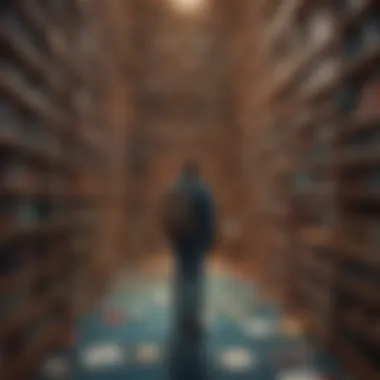
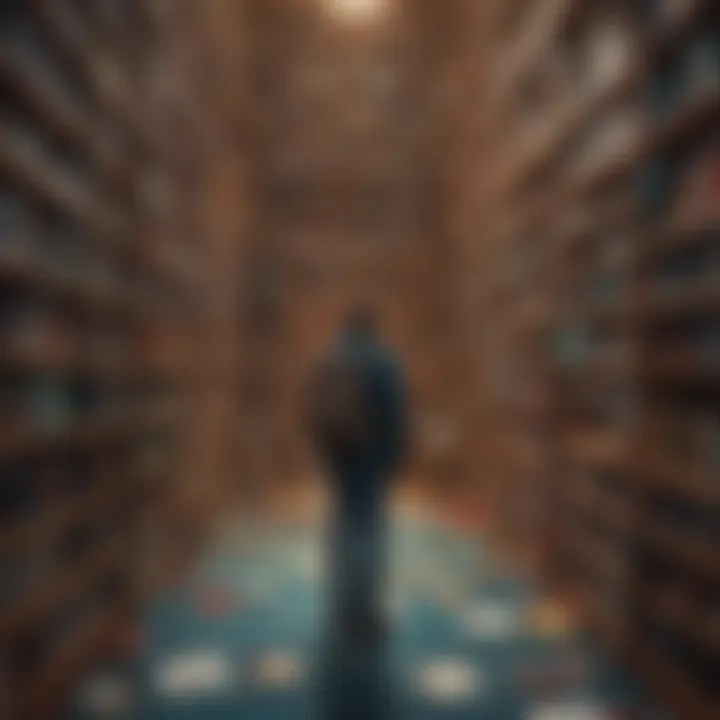
Similar Themes in Literature
The Midnight Library resonates with notable themes found in other literary endeavors, notably those tackling the complexities of choice, regret, and the quest for meaning. Works such as Siddhartha by Hermann Hesse and The Alchemist by Paulo Coelho reflect similar existential inquiries. Each of these novels immerses readers in protagonists who embark on profound journeys, searching for personal fulfillment and self-discovery.
- Choices and Consequences: Just as Haig explores the idea that every choice leads to a particular outcome, Hesse’s Siddhartha embarks on varied paths, demonstrating the many forms of enlightenment one can encounter.
- Regret and Reflection: Characters in The Alchemist also grapple with the decisions they've made, echoing Nora Seed's internal struggle throughout The Midnight Library. The universal theme of looking back at one's choices ties these narratives together, making them relatable to a wide audience.
These works highlight that grappling with life’s choices is not exclusive to Haig; rather, it’s a shared experience across literature that speaks to the human condition.
Influence of Other Works on Haig’s Writing
Matt Haig’s narrative style in The Midnight Library reflects the influences of various authors who delve into similar themes. Writers like Kurt Vonnegut and Neil Gaiman come to mind, each utilizing fantastical elements to explore profound truths about life and choice.
- Kurt Vonnegut: In works like Slaughterhouse-Five, Vonnegut plays with time and reality, forcing readers to ponder the implications of fate versus free will. This thematic complexity can be seen mirrored in Haig's exploration of parallel lives.
- Neil Gaiman: His storytelling often blends the whimsical with the philosophical, an aspect that resonates in Haig’s imaginative narrative structure. Gaiman’s influence is visible in the way Haig constructs his metaphors surrounding the possibilities of existence.
In considering these parallels, it becomes evident that Haig's literary contributions are not invoked in isolation, but rather as part of an interconnected literary lineage that deepens the exploration of human choices and their ramifications.
"The beauty of literature is that it allows us to travel across borders of time and culture, enriching our perspectives and understanding of ourselves and each other."
Engaging with The Midnight Library through the lens of comparative literature not only enhances our appreciation of the text but also encourages readers to explore the vast ocean of literary works that share similar thematic currents.
Future of Reader Engagement with Literary Works
The landscape of literature is morphing rapidly, making it paramount to scrutinize the future of reader engagement with literary works. The implications extend far beyond simply reading a book; they encompass how deeply readers connect with stories and the characters within them. As Matt Haig's The Midnight Library illustrates through its exploration of choices and alternate lives, literature has the potential to be a reflection of our aspirations, regrets, and quests for happiness. A thoughtful engagement with such narratives can reveal insights about our own lives, anchoring the importance of understanding reader dynamics.
Trends in Contemporary Literature
The realm of contemporary literature is experiencing seismic shifts, influenced by social, technological, and cultural trends. One noticeable trend is the increasing emphasis on diverse voices. Authors from varied backgrounds contribute richly textured narratives, broadening perspectives and prompting readers to reflect on their own lives and worldviews. This diversity fosters inclusivity and harbors discussions that range from personal identity to societal challenges.
In parallel, there's a burgeoning popularity of interactive storytelling. Readers now crave experiences that allow them to steer narratives in unique directions, echoing the multiverse concept in The Midnight Library. Choice-driven plots can deeply engage audiences, as they replicate notions of decision-making seen in real life. Each reader becomes an active participant in the world of literature, which can yield a greater sense of ownership over the stories they consume.
Furthermore, the rise of short-format literature—think novellas and articles meant for quicker consumption—caters to our fast-paced lives. This trend reflects a desire for snippets of literary engagement rather than lengthy immersions, making literature accessible to a broader audience.
Role of Technology in Reading
With today’s dependence on digital platforms, technology plays an astoundingly pivotal role in shaping how readers engage with literary works. E-books and audiobooks have surged in popularity, allowing literature to transcend conventional boundaries. Readers can now carry vast libraries in their pockets! This accessibility underscores the impact of modern technology in diluting barriers that once existed around literature.
Moreover, social media platforms like Facebook and Reddit have turned into communal spaces for readers, where discussions about books are held. Readers share thoughts, recommendations, and personal anecdotes that stem from their literary experiences. This not only enhances the engagement factors around a piece, such as The Midnight Library, but also allows for communal learning and growth.
In essence, technology is not just a tool; it's reshaping the literary engagement landscape, making it more dynamic and accessible. Readers can traverse beyond traditional confines, participating in discussions and explorations that suit their unique needs and preferences.
"A book is a dream that you hold in your hand." — Neil Gaiman
As we gaze into the future of reader engagements with literary works, it’s clear that advancements in technology and shifts in social trends will continue to redefine how stories are told and shared. Observing these changes allows us to appreciate the essence of literature in a more connected, responsive world.
The End and Recommendations
The conclusion of an article serves as both a capstone and a compass for the discussions held within. In this case, while diving deep into The Midnight Library, it becomes clear that Matt Haig’s exploration of life choices, regret, and the pathways to happiness resonates profoundly in our contemporary conversations regarding personal betterment. Readers leave with not only an understanding of the novel’s complex narrative but also insights applicable to their own journeys.
The recommendations offered here aim to highlight further thoughts on embracing the lessons from Haig’s masterpiece. One significant element to note is the notion of choice manifesting into various life outcomes. By reflecting on Nora's experiences across different lives, readers are encouraged to ponder their own choices and the resulting consequences. This encourages a habit of introspection that can lead to personal growth, almost like a compass guiding one toward a more fulfilling existence.
Moreover, it’s essential to consider how imagination can be a powerful tool in self-improvement. Engaging with the fictional alternatives that Nora encounters challenges the reader to think creatively about their own lives and possibilities. It’s a reminder that while we often feel confined to a single pathway, the literature has the power to free our minds and open us to a spectrum of opportunities.
Through the lens of Haig's novel, one learns that happiness is not always a destination but a journey filled with learning moments and emotional navigation. Being aware of this while implementing changes in daily life can be transformative.
In sum, the recommendations presented here encourage readers to embrace the flavor of choice, engage with their imagination, and harness their narratives towards personal growth. With this expansive mindset, not only does one appreciate this literary piece deeper, but they also integrate its joyful teachings into the fabric of everyday life.
Final Thoughts on The Midnight Library
Matt Haig's The Midnight Library is much more than just a narrative about alternate lives; it is a mirror reflecting the complexities of existence, regret, and the pursuit of happiness. One can't help but feel a connection to Nora Seed, the protagonist, as she navigates through her regrets and choices. Her journey offers a valuable lesson for all of us: that every decision, no matter how insignificant it may seem, carries the potential to shape our lives dramatically.
The book imparts a profound yet approachable philosophy: life is complicated, filled with uncertainties, and yet, we have the agency to explore beyond our perceived limitations. By the end, readers likely come to understand that the stories we tell ourselves matter significantly. Each choice we make contributes to the person we become, both in this life and the many possibilities out there.
Haig's use of the library as a metaphor for all the infinite choices available underlines a critical truth—while we can't undo every decision, we can learn from them and continue moving forward with compassion and understanding toward ourselves and others.
Further Reading Suggestions
For those intrigued by the themes of The Midnight Library, several other works echo similar sentiments of choice, regret, and self-discovery. Here are a few recommendations:
- The Alchemist by Paulo Coelho: This novel brilliantly illustrates the journey of following one's dreams and the value of personal legends.
- Life After Life by Kate Atkinson: A narrative that plays with the concept of life choices and alternate realities in a wonderfully intricate way.
- The Invisible Life of Addie LaRue by V.E. Schwab: Addressing themes of immortality and identity, this story explores what it means to be remembered.
- The Bell Jar by Sylvia Plath: While it tackles darker themes, it also delves into the struggle of finding one's self in a world full of choices and societal expectations.
Additionally, exploring non-fiction like Atomic Habits by James Clear can provide practical advice on making choices that lead to significant improvements in daily life.
Reading any of these works can amplify your understanding of the profound messages in The Midnight Library, allowing you to reflect on your own life’s infinite possibilities.



